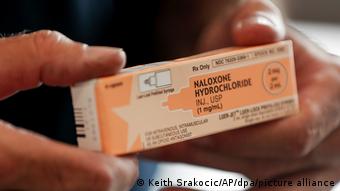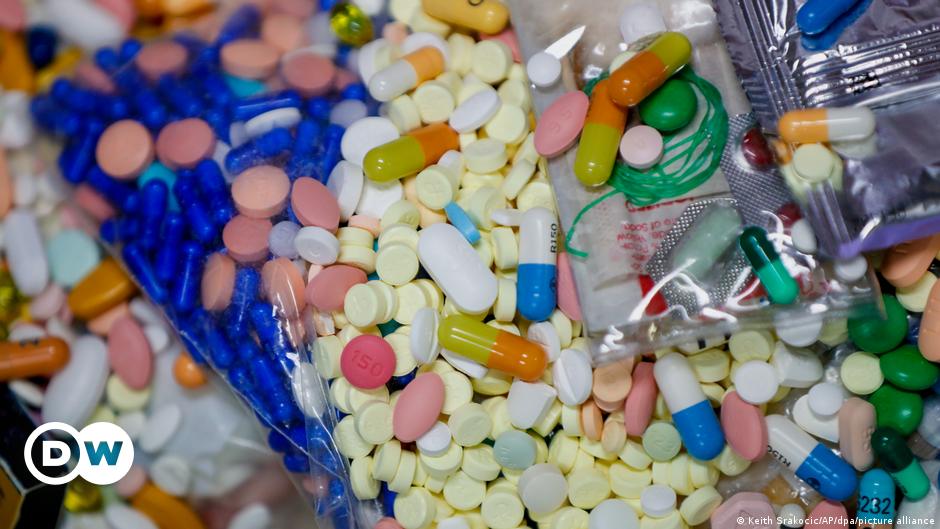Mexican drug cartels play a leading role in the expansion of the opioid epidemic in the neighboring country, with the Sinaloa cartel and the Jalisco Nueva Generación cartel (CJNG) at the head of a list of various criminal organizations, according to the National Drug Threat Assessment 2020 (NDTA). A few weeks ago, the Drug Control Administration (DEA) warned that social networks such as Tik Tok, YouTube, Instagram, Messenger and Snapchat are some of the applications used by these criminal networks to reach consumers. They are perfect tools because they are available from any smartphone, according to the entity.
Mexico, opium producer with a long tradition
“This is not surprising, nor is it new either. Mexico began to cultivate opium a long time ago, and it is one of the three countries that produce heroin for the illicit market, produces methamphetamines and is the transit of cocaine with the main destination of consumption in the United States. “, says the social psychologist and addiction specialist María Elena Medina Mora, in conversation with DW. “What is new now is the inclusion of fentanyl with mixtures that exceed the capacity of the market and international organizations to control these substances, because there are many and they are not registered,” says the academic and former director of the Ramón de la Fuente Muñiz National Institute of Psychiatry (2008-2018). The specialist points out that the consumption of fentanyl began to be detected not long ago, due to user reports. “They report that these drugs are much more attractive because they have a higher effect, that this new substance was integrated into all forms of heroin, opium, and that it was something much more powerful, very stimulating because they could go longer without being looking for drugs.” Last year, Mexican authorities reported the seizure of 1,800 kilos of fentanyl, a record figure.
Beau Kilmer, director of the RAND Drug Policy Research Center, says that Mexican criminal organizations are playing a leading role, both in the production of fentanyl and in trafficking it across the border. “But you have to keep in mind that when you read about tons that have been seized, they refer to the weight of the packages, but often only 10% of a kilo is fentanyl; the rest is filler or other substances such as heroin, but fentanyl is 25 times stronger than heroin. When people buy fentanyl on the street, most of what they buy is filler, but you don’t need a lot of fentanyl to feel the same effect that heroin would produce, “explains the academic.
a homemade problem
Both experts agree that this epidemic was initially caused by the advertising campaigns of pharmaceutical companies, in their eagerness to increase their profits. “At least when it comes to prescription opioids, it’s well documented that pharmaceutical companies have worked hard to treat pain across the country with oxycodon and other opioids. The drug has undoubtedly helped millions of people suffering from pain, but the companies lied to the public and to doctors about its addictive potential Although there have been efforts over the past decade to reduce prescriptions, and they have dropped dramatically in recent years, the United States remains the world leader in prescription prescriptions opioids per capita,” says Beau Kilmer. For her part, María Elena Medina Mora stresses that opium remains the best pain medication. “In the United States, opium and synthetic formulations similar to opium, which is what is now used for pain caused by terminal illnesses such as cancer, were controlled by medical prescriptions, but the call for the right of people to a dignified death, without pain. However, this human right was abused, it began to be prescribed for any pain, not only serious pain, but for immediate pain and chronic diseases, which generated a lot of dependency.”
Many people became dependent on drugs.
–
Although the pharmaceutical companies have already gone to court and been found guilty, the problem was that the authorities controlled the availability of these substances without considering the large number of people who suffered from an addiction. “Fewer people had access to these drugs, which caused a very serious problem for those who were already dependent. This created illegal markets that sell without quality control.”
Harm Reduction Programs
Beau Kilmer assures that addiction and overdoses must be reduced and advocates that “substances such as buprenorphine and methadone be more accessible to people who suffer from an opioid use disorder.” The academic maintains that efforts are being made, but there is much to be done not only at the federal level, but also at the state and local levels. He cites the syringe exchange programs, with some 400 centers operating in the United States, and notes that some centers of this type have been prohibited at the federal level, arguing that an assessment of risks and benefits is necessary.
The academic highlights that since the Biden Administration there is a paradigm shift. “There are already federal funds, for example, to buy syringes, or centers that verify the chemical content of medications so that users know what they are consuming. Also to make naxolone accessible, a drug that quickly reverses an opioid overdose. All this has been an important step by the Biden Administration”. However, there are still no consumption centers, where users who buy drugs on the black market consume them under medical supervision, he explains. In all over the world, about all in European countries and Canada, there are about 150 centers of this type, but not in the United States because the federal government argues that they violate federal laws.

A drug helps in cases of overdose.
–
Phenomenon in Mexico
In Mexico there is no availability of drugs that prevent overdoses. They are controlled as if they were a drug. “We have worked hard to get the authorities to declassify these drugs that in the United States are given to the police and the relatives of dependents, to people who are close to users, so that they don’t die from overdoses because people stop breathe,” says María Elena Medina Mora.
The academic points out that there has been a significant increase in overdoses on the northern border, where most of the consumption in Mexico is concentrated. “The communities with fewer resources are the most affected, because they do not have access to treatment, to services, and because this is not seen as a disease, but as a vice, and that has generated a lot of stigma, a lot of pain and social rejection. We should address a global response to an issue in which it is not considered necessary to invest resources, when we have seen that when money is invested, the response is fantastic”, he concludes.
– .


